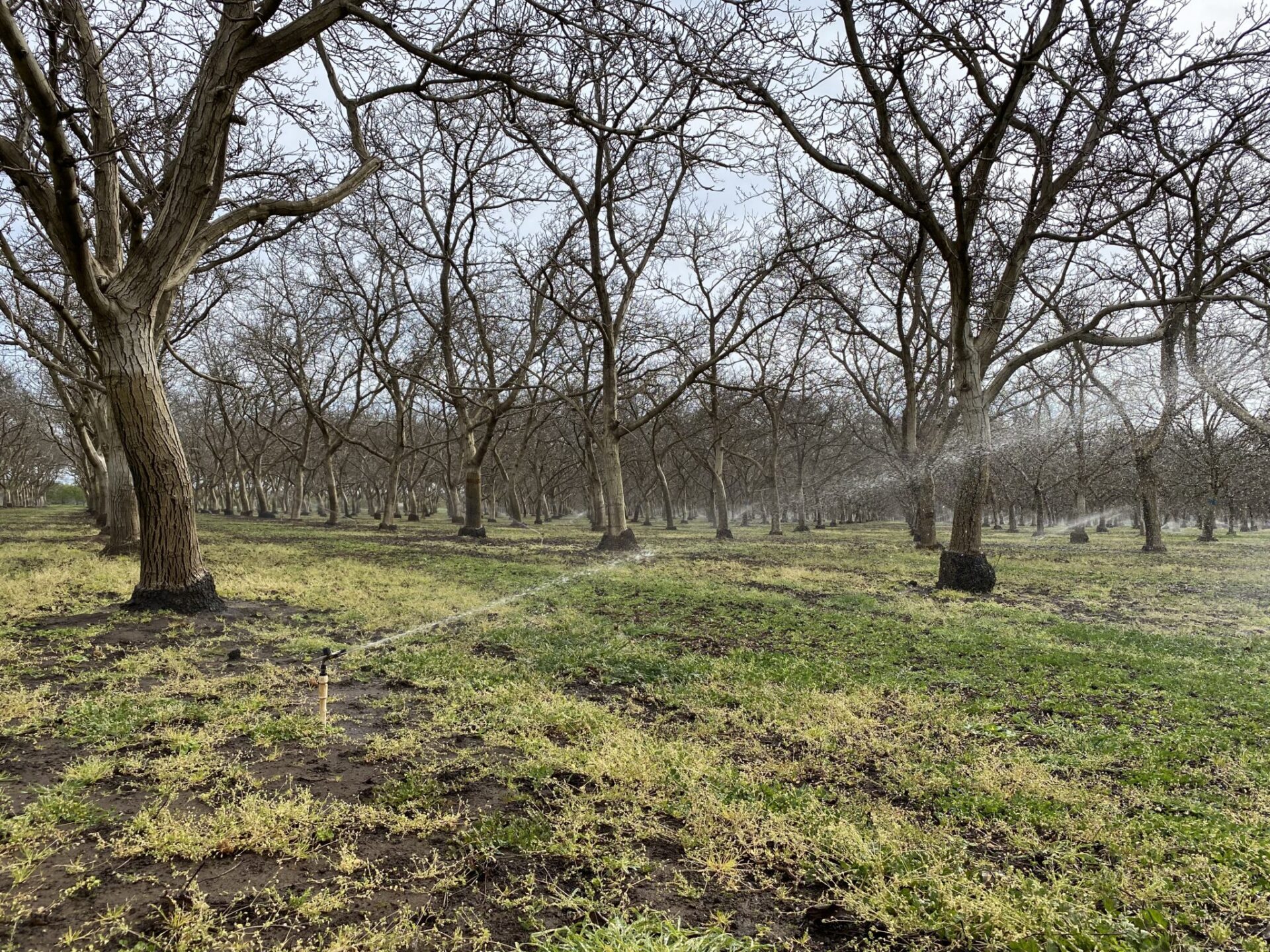
Much of California’s Central Valley is ending the year on a relatively dry note. Dry Decembers are not new, but going into 2021, this slow start in the rainy season means growers have to think about turning on the pumps or competing for scarce surface water supplies to irrigate their orchards.
Allan Fulton, UCCE irrigation advisor emeritus, said in a Growing the Valley podcast episode that evapotranspiration reports normally cease by mid–October when rainfall exceeds tree needs. Due to a lack of significant rainfall, the weekly reports were going out through mid-November.
“There were a lot of zeros in November and December when we expect three, four or five inches of rain by then in the north. You have to deliver the water that rainfall hasn’t,” Fulton said.
Irrigation water can be applied if rainfall is lacking, but manage risk with little steps.
Luke Milliron, UCCE orchards advisor, said filling the root zone not only means water will be available when root activity begins, but the moist soil provides passive frost protection for vulnerable trees. Irrigating two to three days prior to a forecast frost and re-filling depleted moisture in the top 12 inches of soil allows more heat to collect in the soil during the day. Heat is then released at night, providing some protection for vulnerable trees.
Evapotranspiration rates show how much water trees have used over a week’s time. That has to be replaced by rainfall or irrigation. Fulton said it is important to know the water holding capacity of the orchard soils. Matching the water holding capacity of the orchard soil with a combination of rainfall and irrigation water will aid in frost protection needs and prepare the orchard for late-winter root activity.
Applied water should not exceed infiltration rates of the soil, Milliron said. Though dormant trees are more tolerant to anaerobic conditions than leafed-out trees, prolonged standing water should still be avoided.
Orchard access can also be impeded if a combination of irrigation water and rainfall exceed soil infiltration capacity.
Fulton said in the podcast that growers have choices in winter water applications. Instead of a single decision, growers can look each month at soil moisture, past rain and the forecast in determining whether winter irrigation is needed.
Orchard access in spring is a possible benefit of winter irrigation. For example, if the rootzone is at field capacity before leafout, irrigation isn’t preventing orchard access when fungicide or bactericide sprays are needed.
Deep moisture stored in the soil is a good place to start in the spring. Researchers are concerned that excess spring irrigation leads to root damage and more water stress in the spring. Instead, researchers advise ideally starting the season with a replenished rootzone and using the pressure chamber to determine when to start irrigation.
Listen to the podcast discussion on winter irrigation: growingthevalleypodcast.com/podcastfeed/winterirrigation.
Information on pressure chamber use: sacvalleyorchards.com/manuals/.











